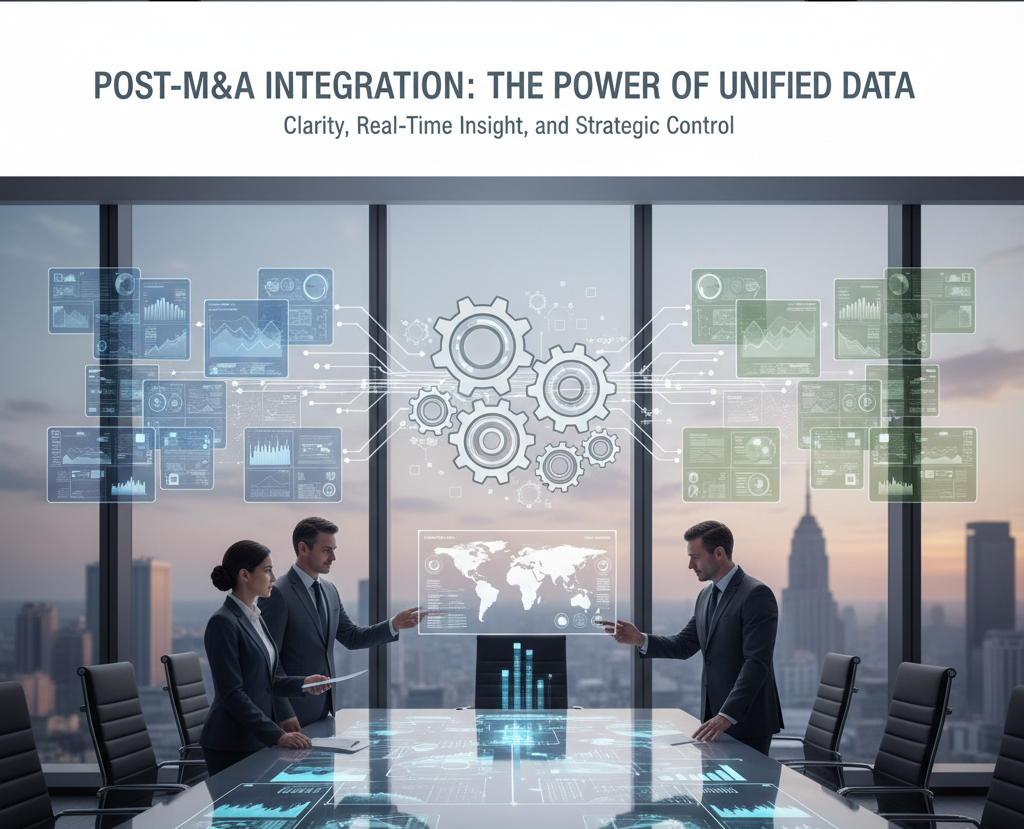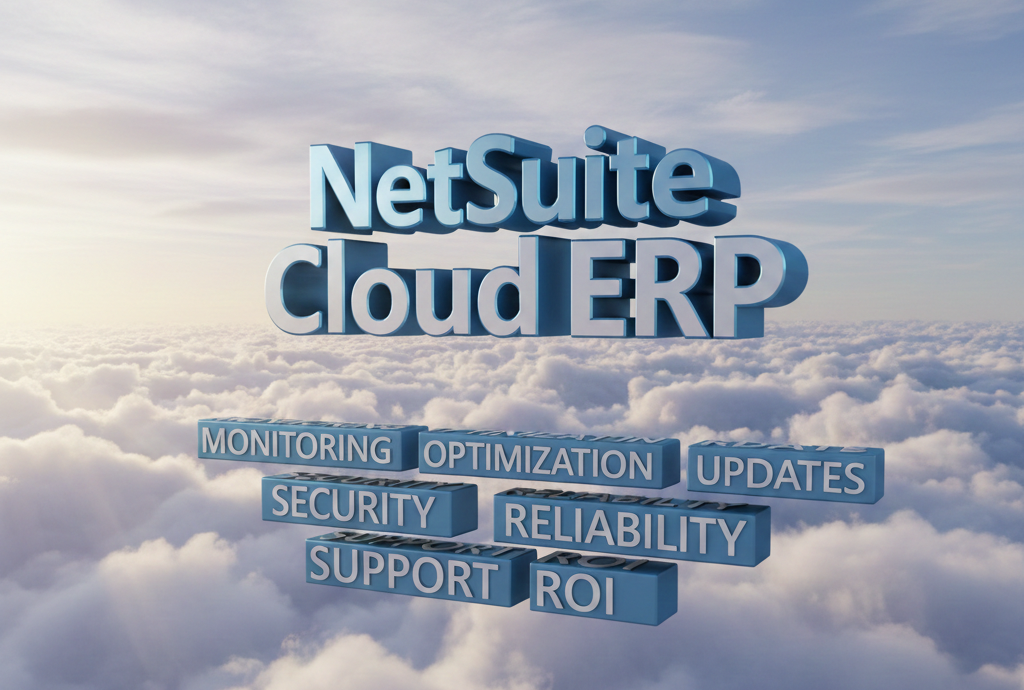Mergers and acquisitions (M&A) are meant to create stronger, more efficient organizations. But the post-deal reality often looks very different: overlapping systems, conflicting data, and financial blind spots that slow down integration.
That’s where Oracle NetSuite comes in. Beyond being an ERP, NetSuite acts as a central nervous system that connects finance, operations, and reporting—so newly merged businesses can move from disruption to value faster.
Let’s unpack how NetSuite supports smooth post-M&A integration and why it’s becoming a go-to ERP for companies consolidating after a deal.
Why M&A Integration Is Harder Than It Looks
Every acquisition starts with a promise—synergies, cost savings, market expansion. Yet most deals struggle in the integration phase. Here’s why:
Disparate systems: Each company runs its own mix of ERPs, CRMs, and legacy tools that don’t talk to each other.
Data inconsistency: Finance and operations teams spend weeks reconciling different data formats and charts of accounts.
Manual consolidation: Reporting across subsidiaries becomes a monthly fire drill, delaying visibility.
Compliance risk: Different processes and approval workflows create gaps that can lead to audit or regulatory issues.
The result? Executives lose real-time visibility, teams duplicate effort, and the value of the acquisition gets delayed.
What companies need is not just an ERP migration—but a unified, cloud-based platform that can handle multi-entity operations with agility. That’s exactly where NetSuite stands out.
How NetSuite Accelerates Post-M&A System Consolidation
1. Unified Financial Management from Day One
NetSuite’s cloud architecture lets you centralize multiple entities under one system—without waiting months for traditional IT integration.
Each acquired business can retain its local structure while still rolling up to a consolidated parent view.
With OneWorld, NetSuite’s multi-subsidiary management feature, you can:
- Maintain separate books for each entity while consolidating in real-time
- Handle multi-currency and multi-tax environments
- Generate consolidated reports automatically
This means finance leaders can close the books faster, standardize reporting, and focus on strategy instead of spreadsheet gymnastics.
2. Rapid Data Standardization and Migration
One of the biggest challenges post-acquisition is aligning master data, including customers, vendors, items, and accounts. NetSuite simplifies this with robust data import and mapping tools that help harmonize different systems into a single structure.
Using SuiteCloud and integration connectors, data from legacy systems (SAP, QuickBooks, Microsoft Dynamics, etc.) can be migrated efficiently. This eliminates redundant data entry and ensures your combined team is working from one version of the truth.
3. Built-In Intercompany Accounting and Eliminations
Merging entities means constant intercompany transactions—loans, transfers, and shared expenses. NetSuite automates these processes:
- Intercompany journal entries are created automatically
- Eliminations are handled during consolidation
- Shared costs are allocated using pre-defined rules
This reduces manual reconciliations and ensures audit-ready financials across entities.
In short, NetSuite takes what used to be a month-end nightmare and turns it into a click-driven process.
4. Scalable Architecture for Future Acquisitions
M&A integration isn’t a one-time event for many businesses—it’s a repeatable strategy. NetSuite’s scalability means each new acquisition can be onboarded faster, using the same framework.
You can spin up a new subsidiary in hours instead of weeks, clone key configurations, and bring the new entity online without disrupting existing operations.
That’s why private equity firms and holding companies rely heavily on NetSuite—it keeps portfolio businesses connected, transparent, and easy to manage.
5. Unified Reporting and Real-Time Visibility
Post-deal, executives need one dashboard that tells the full story: consolidated revenue, expense trends, and cash flow across the new organization.
NetSuite provides this instantly through customizable dashboards, KPIs, and role-based reports.
CFOs can drill down from consolidated financials to entity-level details, without waiting for manual uploads or reconciliations.
That’s real-time control—and it’s often what separates successful integrations from chaotic ones.
6. Compliance and Audit Readiness Across the New Entity
When two businesses merge, compliance requirements multiply, including different GAAP standards, tax jurisdictions, and internal controls.
NetSuite helps manage this complexity through:
- Built-in audit trails track every transaction and change
- Configurable approval workflows that standardize internal controls
- Localized tax and compliance modules for global entities
This ensures that even while operations are being unified, your financial governance stays tight and transparent.
Real-World Impact: Turning Integration into Acceleration
Imagine a scenario where Company A acquires two regional competitors, each running different financial systems. Instead of running three separate ERPs for months, they deploy NetSuite OneWorld within weeks.
Finance can now consolidate daily, eliminate redundant software costs, and produce unified reports for investors.
Operational teams see consistent data, procurement is streamlined, and the CFO finally has a single view of financial health.
That’s the shift—from “integration project” to “operational advantage.”
Why C-Suite Leaders Should Care
For CFOs and COOs, the first 100 days post-acquisition determine whether the deal delivers value or turns into a drag.
Every day spent reconciling systems and cleaning data is lost momentum.
NetSuite’s value lies in its ability to simplify the complex: multiple systems, entities, currencies, and compliance frameworks all rolled into one cloud platform.
It gives leadership teams control, transparency, and confidence to make decisions fast—without waiting for IT or manual reports.
Final Thoughts
The real challenge in M&A isn’t closing the deal—it’s unifying people, processes, and systems quickly enough to realize its promise.
NetSuite gives organizations the structure to do exactly that. It accelerates post-deal integration, eliminates redundancy, and provides real-time financial clarity that fuels smarter, faster decisions.
For companies pursuing growth through acquisition, NetSuite isn’t just an ERP choice—it’s a strategic enabler that turns integration chaos into competitive momentum.
Frequently Asked Questions
Why is M&A integration so challenging?
Most deals struggle post-acquisition due to disparate systems, inconsistent data, manual consolidation, and differing compliance requirements. These issues delay visibility, create duplicated effort, and can slow down the realization of deal value.
How does NetSuite simplify post-M&A integration?
NetSuite acts as a unified cloud platform that connects finance, operations, and reporting. It centralizes multi-entity management, standardizes data, automates intercompany accounting, and provides real-time visibility across the organization.
What is NetSuite OneWorld and how does it help?
OneWorld is NetSuite’s multi-subsidiary management feature. It allows companies to maintain separate books for each entity while consolidating in real-time, handle multiple currencies and taxes, and generate automated consolidated reports.
How does NetSuite manage intercompany transactions?
Intercompany journal entries are automated, eliminations are handled during consolidation, and shared costs can be allocated using pre-defined rules, reducing manual reconciliation and ensuring audit-ready financials.
Is NetSuite scalable for future acquisitions?
Absolutely. NetSuite’s cloud architecture allows new subsidiaries to be onboarded quickly, using existing configurations. This makes repeat acquisitions faster and less disruptive to ongoing operations.
How does NetSuite support compliance and audit readiness?
NetSuite includes built-in audit trails, configurable approval workflows, and localized tax/compliance modules. This ensures consistent governance across merged entities, even in multi-jurisdiction environments.
What benefits do executives see with NetSuite dashboards?
Executives get real-time visibility of consolidated revenue, expenses, and cash flow. They can drill down into entity-level details instantly, enabling faster, informed decision-making without waiting for manual reporting.
Why should CFOs and COOs prioritize NetSuite during the first 100 days post-acquisition?
Early integration success determines whether a deal delivers value. NetSuite reduces time spent reconciling systems and cleaning data, giving leadership immediate control, transparency, and the ability to act quickly.







